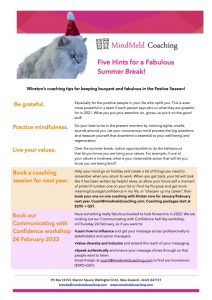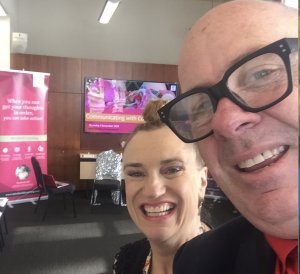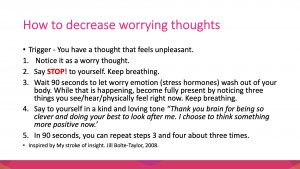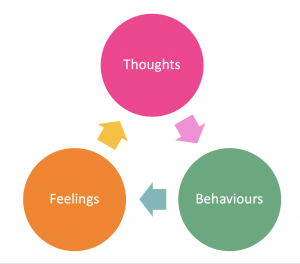Brenda's Blog
We love what we do – 2021 is on!
We are so happy it’s 2021 and we have no problem being back at work because we love what we do – which is helping your magnificent selves be even more fabulous at work!
Here’s what we did on our holidays; hung out with friends and family, drank kale juices, jumped off a jetty, read books, gave crazy Christmas presents, op-shopped, and downloaded Bridgerton but haven’t got round to watching it yet.
We hope your holidays were just as invigorating/relaxing, whatever is right for you. The break certainly helped us reflect on how lucky we are to live here in Aotearoa NZ, and we feel super-thankful for that, while knowing that there are further challenges ahead.
Doing a smidge of strategic planning this morning, what we learned from last year is that creativity and bravery are the way to go in business. Thank you all who allowed us to share our resilience tools and bring our full sparkliness to coaching and workshops (that genie is not going back in the bottle).
People have asked us about our goals for this year. Here they are.
We want to look back on now from five years time, and know we did our best to be kind, helpful, generous, responsible, expansive and caring. That we rocked out our MindMeld Values to the max (Creativity, Results, Abundance, Delightful, Professional and Honesty). We all have something going on in our lives and so compassion and reassuring ourselves of our own ‘enuf-ness’ is the way to go in 2021.
On these hot days at work, wiggle your toes under your desk, and get ready – 2021 is on!
Be Fabulous Online!
Tips and Tricks for Building Online Meeting Rapport
Over the last few weeks, we have all been becoming more skilled with facilitating meetings via a variety of on-line platforms. You’ve mastered booking meetings on line, sharing data, and having online drinkies after work. Nice! We have felt our collective neurons growing as we have all learned these new skills.
At MindMeld we love facilitating meetings, and have been tweaking our face-to-face style to continue to provide that lovely rapport-building between participants that makes for rich and productive conversations. Rapport is important for your team to feel engaged and connected in a time of change.
If you are anything like us, you have got used to this new online way of working (kind of), and are wondering how to keep the new adaptability and good things going forward (‘work tops/trackie bottoms’).
Kristan and Brenda rocking out a resilience webinar – sci-fi themed for added engagement!
Follow these tips to keep your team-building gains, and set your team up for success when you are all back working face-to-face.
- Sit on top of your router, (well not literally, that’s a bit uncomfortable). But sit as close as you can to reduce buffering and your screen freezing.
- Do a practice meeting with yourself to see what you look like on screen. If you have a Photo Booth function then you can check your background for a professional look, and adjust your screen tilt to reduce the ‘up the nostril’ shot or extra chins.
- Speak in short sentences, with one point per sentence, so that all participants can hear your message.
- Keep your agenda short. Facilitating workshops online is tiring for you and the participants.
- Give a ‘head and heart’ goal at the beginning of the meeting. This means be clear on what you want to get out of the meeting (head goal), and how you want people to feel such as connected and included (heart goal).
- Smile and nod. Normally we would read the body language of others in the room, but that is not so easy online as we can’t see their whole body – we can only see their head and shoulders. Nodding is an unconscious reflex, which demonstrates you have heard the other person, and gives other participants the confidence to speak. If you are not sure when to nod, then nod at the end of the other person’s sentence. This helps you look authoritative and not like a nodding dog in the back of the car.
- Ask questions! A great way to ask questions, is to start with the person’s name (to let them know a question is coming), followed by an open question, such as: “Kristan what is your view on what we have discussed?”This pre-supposes that Kristan has a question. If you ask: “Kristan, do you have a question?”, then he can answer “Yes” or “No”, and you have a 50% chance of him shaking his head – ‘Nek minute’, dead air.
- Pop yourself on mute when you are not speaking. Heavy breathing while listening can be picked up your computer and switch the speaker’s screen to your screen, which disrupts the flow.

- Winston our Coach Cat makes this ‘Open the fridge now’ face during every meeting. Your pet will sense you are busy online and will try to get your attention any way they can. Our cat Winston is a shocker for demanding food loudly, and walking across the keyboard. That’s OK, people like to see pets. But don’t let your pet knock a glass of water over your computer. [Advice from Kristan, based on real-life events from last Thursday’s workshop.]
- Headphones work to cut down on any unwanted background household noise from being transmitted to your colleagues. If you have noise-cancelling headphones, use them, they are amazing.
- Remember all the good processes you normally use in meetings to make them go well, and do them! If you open and close with a karakia and waiata, that is fantastic, and still do those things.
Finally, don’t be afraid to create new rituals that work for you and your team! We’ve been ending workshops with an inspirational quote (pictured), which can also be used as a mantra.
A little bit more on body language and rapport.
Albert Mehrabian found in his research that when people are together and talking about their feelings in a situation, emotional meaning is communicated:
- 7 percent through actual words used. Head goal and heart goal.
- 38 percent through the voice — tone, speed. Short sentences, and openquestions.
- 55 percent through body language — gesture, posture, facial expressions. Nodding at the end of the sentence, smiling.
References
• John Gottman, The Gottman Institute, www.gottman.com and The Seven Principles of Making Marriage Work. (2000) . • Albert Mehrabian, Silent Messages: Implicit Communication of Emotions and Attitudes (2nd ed.) (1981).
Star trek wedding
Help Your Team Feel Accomplished and Successful Going Into Their Easter Break.

Brenda, Dayna (our essential service worker in the Police Call Centre – our family is so proud of her) and bunnies.
You can ask your team members these questions in your virtual one on one catch-ups or at your team check-ins.
The questions.
1.What do you feel good about that you have achieved this week? (Big or small, work or personal.)
2.What is something in your current life situation that you feel grateful for?
3.What fun activities are you looking forward to doing over the Easter Break?
Why these are great coaching questions.
Question 1 – Achievements. When we judge our day on our productivity but cannot access the files we need, it’s hard to feel productive. It is useful to notice achievements both big and small.
Question 2 – Gratitudes create a growth mindset. The more we notice what we are grateful for, the more positive things will manifest.
Question 3 – Looking forward. Anticipation and optimism help us feel more in control. Identifying fun activities over Easter creates a sense of difference between workdays and weekends which leads to a stronger sense of structure.
Enjoy your Easter Break!
Brenda, Kristan, Dayna and Bunnies!
Don’t Drop Your Cell Phone Down the Toilet! And if you do, don’t worry.

Here is Winston our ‘coach cat’ guarding my laptop.
This blog is about realistic versus middle of the night worries, and how to manage both kinds.
I asked Kristan (husband and also colleague at MindMeld) about what he was worried about. We both had a long list, which we compared. Some of these things were quite unrealistic (on my list anyway). I said to him, “What is the most useful thing to worry about to ensure business continuity?” I was surprised with his answer – “Don’t drop your cell phone down the toilet’, until he explained that this is one thing we could control. His reply got me thinking about ‘realistic worries’ and what we can do to decrease worrying by taking positive action.
If we can take action to decrease the likelihood of realistic worries coming true, then we are left with the ‘middle of the night worries’, which we can keep zapping with the coaching tools below.
I was already thinking about this blog when I received this photo from our friend Blair of his smashed laptop, so I know we are not alone.
Kristan and I agreed we needed to do something about lugging our phones with us everywhere, in terms of listening to audiobooks or watching Netflix while we are in the bath, or taking our cell phones with us into the bathroom.
If something happened to our cell phones we would be stuffed, and I don’t need the stress of having to manage insurance, and how to get a new one right at this minute, as well as bothering suppliers.
Notice what is realistic and deal with things that could likely happen.
One thing I know about myself is that if I am under stress, I can get clumsy because I am distracted. I decided to make a list of the three physical things that I need to take care of during lockdown so that I didn’t create extra worries on top of my middle of the night worries.
- Reading glasses. Do not place on the floor by the bed where I can stand on them in the morning. How would I see without my glasses?
- Jewellery especially rings. Take off and put away before I wash my hands while humming Star Trek theme for twenty-seconds. Do not leave rings of the edge of the sink to go down the plughole.
- Rinse dishes always before putting in the dishwasher, so that the filter doesn’t get blocked. Imagine trying to get your family to hand wash dishes during lockdown!
There are other worries that plague us and make us worry especially in the middle of the night.
Everyone is different and has there own unique situation of no one situation is the same, and while things may look great on the outside, things can be completely different on the inside. Lockdown situations are unique, with respect to work spaces, family members involved in essential services, being apart from family members, feeling rushed trying to learn business arrangements and online meeting platforms, and looking after children and vulnerable members of family. Middle of the night worries are different for everyone.
I used to name my worries ‘The Hooded Claw which was a line from a Frankie Goes to Hollywood song (1980’s, I know). This was until I realised through coaching, that working is a process, not a thing. I stopped giving worry a name and started to look for ways to undo the process.
Here is a photo of our window display of teddies for the neighbourhood children to spot on their walks.
Here are two ways to break middle of the night worries.
Worrying will always be with us, as it is a safety mechanism. The trick is to not let it rule your life, and find a way to give yourself some head space to take care of your loved ones, do some work, and even bring forth a bit of creativity.
- Tool One: Interrupting your middle the Night thoughts and worries.
This tool works to help you come back into your body by bringing awareness to your senses. You can still see some shapes, and hear some sounds when it dark. You can physically feel the pillow, or sheets.
Step 4 can seem unusual when you first try it. However, if you really ask yourself why you worry, you will find it is about keeping you safe. You can reassure your brain that you have got this.
- Tool Two: Schedule a meeting with yourself to worry (that’s not 3.00 a.m.)
This is known as the Worry WART Tool – Worrying within approved Rumination Time. [This was an affectionate name given to me as a child who worried a lot so I decided to make the name into an acronym to rewire my brain and bust worrying tendencies.]
If you have the MindMeld Courage Cards, you can find it in the Practical Courage Section. You can watch a little movie of how to use the tool here.
Here’s Kristan holding the Courage Card tool. It says: Identify a time to have a meeting with yourself during the day, so you can worry about the situation flat out for 30 Minutes (actually a shorter time works just as well). Then if you think about this issue outside your Worry WART time, all yourself you will give this issue your full attention later. This tricks your brain and frees up your thoughts for more useful tasks.
You are enough just as you are.
If your worry has been: ‘I should be more productive/creative/energised/up for this challenge’, then please stop ‘shoulding’ on yourself.
You are enough. You’ve got this. Be compassionate to yourself.
Brenda Ratcliff and Kristan Johnston, April 2020.
Worry WART Tool – Worrying Within Approved Rumination Times
Worrying Within Approved Rumination Times in the Tardis
Here’s short clip showing you how to decrease worries, by scheduling a specific time to worry.
Identify a time to have a meeting with yourself so you can worry about the situation flat out for 30 Minutes (actually shorter time works just as well). Then if you think about this issue outside your Worry WART time, all yourself you will give this issue your full attention later. This tricks your brain and frees up your thoughts for more useful tasks.
Spoiler alert! What you will find is that by the time it comes for you to have your meeting, you will have forgotten about it, or you can’t focus on that worry, and choose to do something else.
Put Your Big Girl Pants On!
It is all about confidence.
Big Girl Pants are a metaphor for being confident and doing some things that need to be done even if you don’t feel like it. At MindMeld we actually have some Big Girl Pants – yes really. Here’s a picture of me with them out in public. These Big Girl Pants were made for me by a fellow coach and they make an excellent prop for conferences and workshops on confidence and resilience. [If you think that is weird, you should see what else is in our workshop tool kit.] I was asked after this particular conference “Are these your actual pants and do you wear them?” I said, “No, the sequins would be too scratchy” but that didn’t seem a satisfactory response as the questioner still looked doubtful.
There is a lot to do right now even though we don’t feel like it, and a lot to cope with.
This list is literally not exhaustive (is anyone else out there feeling exhausted?):
- How to cope with weekends that aren’t different from weekdays anymore
- Staying inside when we don’t feel like it
- Helping our kids with homework and doing housework and actual work all at the same time
- Eating the same food over and over
- Wearing active wear all the time — though that could be a good thing
- Watching my regrowth actually grow in front of my eyes
- Trying to prepare healthy food so that I actually fit my work clothes when we come out of this thing
- Facing something new and uncertain that we have never faced before.
Work your Cognitive Triangle of Thoughts, Behaviours and Feelings to Take Action and Feel Better.
When I imagine putting my Big Girl Pants on, I can do what needs to be done, regardless of how I actually feel inside. Cognitive Behavioural Therapy talks about ‘working your Cognitive Triangle, of Thoughts, Behaviours and Feelings’. This means that when you positively influence one, you positively influence the other two. The thought of putting on my imaginary Big Girl Pants then influences me to perform the behaviour I choose to do , and I feel better. Try it, it works.
A mini-coaching session right now!
At MindMeld, we have several card decks that we use with clients. The front of each card has a picture and a title, and the back has a coaching question. These coaching questions can go quite deep. The cards allow gorgeous coaching clients to consider a deep question even when Kristan and I are not in front of them to ask it. We are now going to use our Charisma Coaching Cards with you so you can have your own little coaching session to help you put on your Big Girl Pants. Here we go. Are you ready?
Your two cards are, of course: ‘My Big Girl Pants’. Kristan is holding them so you can see the front and back of each card, to show you these pants are for everyone.
- Here’s your first question: ‘Have I forgotten to put them on?’ Have a think now about where in your life you might need to put them on, and have the confidence to state your needs in order to get them met.
- Here’s the second one: ‘Have I given myself a wedgie from over use?’ Where have you been a little too assertive, and that perhaps has not served you or the people you care about?
If I ask myself if I might have forgotten to put my Big Girl Pants on in the last few days, then yes, I can see where I have said my needs only in my head instead of in the real world.
When I consider if I have given myself a wedgie from overuse, well actually that is true too. I might have been a bit overly assertive with my need to control what I can control in terms of my home environment. Do I need to rant at family members to unpack dishwasher before it even finishes beeping? No, I do not.
Here are your two coaching questions to carry you through the next little bit. Remember they are coaching questions to help you take action and feel better, not a way to judge yourself or others. You are enough just as you are.
My Big Girl Pants:
- Have I forgotten to put them on?
- Have I given myself a wedgie from overuse?
It’s all about finding a comfortable balance.
- Brenda Ratcliff and Kristan Johnston March 2020.
Everything we learned about resilience we learned from science fiction!
The Extrovert’s Guide to Working From Home

At MindMeld, I have been working from home for the past eight years, and Kristan for the last three years. We know a lot about working from home, but it wasn’t until this week when several people starting asking me about it, that I realised how much Kristan and I know about how to function effectively when working from home, in terms of practical tips, how to manage emotions, and stay connected with colleagues.
We are both extroverts. I need a lot of people contacts per day, otherwise, my emotional and physical energy gets low. Our MindMeld Purpose is all to do with helping people through coaching and workshops, so I need to be around people to feel on purpose in my work. We have strategies that keep our focus and energy up as we work from home and want to share them with you. Please feel free to adapt them in a way that works for you, the working from home requirements of your agency, and of course, complying with any legislative and Ministry of Health requirements.
Our office is affectionately known as ‘The TARDIS’, as it is decorated to reflect Dr Who, one of our favourite Sci-Fi TV shows. Working from home is probably hardest for me when it is raining, cold, and everyone is home for the school holidays. Dishes pile up, Winston our cat will get his fur wet and muddy, and then he smells a bit like an old sheep. That’s when he will sit on me or on my keyboard. Family interrupts because they are bored or hungry. Be compassionate to yourself and to them. You will get interrupted a lot, so roll with that.
Here are the three qualities that we think are the most important in working from home:
Time Management – Goal setting – Self management
Time Management
Work out your most creative period. For me, that’s in the morning. Inspiration can strike any time from 5.30 a.m. onward, and I know I am at my best designing coaching tools and handouts till about noon. I try to protect this time (and also be really quiet so I don’t wake up everyone) and will resist texting or interruptions as much as I can. I have ‘meetings with myself’ in my diary so that my colleagues know I am working on something important and give me that space. It also helps with the little dopamine hits in my brain of having achieved something that day. Then I really want to be with people in the afternoon. That’s when I hold coaching sessions (face to face while we still can otherwise it’s online), and also have phone and Zoom meetings.
Having a routine helps you achieve your work and balance demands from home. Decide a start and finish time, and stick to them. Close the door when you finish.
Goal setting
What must I do today? What would I like to achieve?
I work that out and start with my ‘must dos’’. If I feel a bit overwhelmed with a lot of must do’s, I begin with the task I have the most energy and enthusiasm for and as this gets my brain going for the other tasks. I find this works better than doing a whole lot of ‘shoulds’, as this can spark ideas, and I find life just goes better this way.
Self management
Skype coffees
I can get lonely working from home, and have some good strategies in place to deal with that. ‘Skype coffees’, where colleagues or friends make a coffee at their place, and then we go online and drink them together. I try to be upbeat and positive when having these kinds of meetings so that we energise each other.
Inspiring yourself
Make a playlist of music that helps you think and is uplifting. Doing a little dance in the office is energising and fun. [Check this out for some fun moves Never Stop Dancing NZ] I also bring other people into the office virtually, as I am very fond of audiobooks (check out Overdrive or your public library where you can download loads of great audio and e-books for free). I have the audiobooks running when I am tidying or filing because I really need motivating to do that!
We also have a couple of funny YouTube clips or inspiring speaker clips that might be 2 minutes long that provide a bit of boost and I might call them up if I need a bit of connection or cheering up. Here they are: Megan Rapinoe co-captain US soccer team speech excerpts; Animal Odd Couple Man who has a buffalo living in his house.
On the wall above your computer screen, create a collage of people you love and things you love to do, plus mantras to see you through. We also have our operating model on the wall in front of us to help guide decisions and remember our values. Decorating the wall in front of you with important reminders is really helpful, and your online guests won’t be able to see it.
Managing your thoughts
If I am home alone for too long, I find it hard to be confident in decisions and things might bug me that wouldn’t normally, and I become guilty believing my own thoughts and judging a situation. One of my best coaching tools is to do some inquiry and ask myself ‘Is this really true?‘ “Could there be another reason for this?’ and take a breath before responding. If we don’t have people in front of us, we are missing the vital clues to motivational behaviour that their body language provides. When we can only go by what they write in their emails, it’s so easy to feel triggered. I stop and think, ‘What is their positive intention underpinning their message?’ That helps with perspective.
Working from home requires a lot of compassion because your people aren’t in front of you but their emails are. I find taking my time to answer is really helpful. Kristan says “Check yourself before you wreck yourself”
Managing your home
The washing!!! Many people say they can’t work effectively from home if the house is a bit messy or there is something about the house that needs attention. You wouldn’t be late to work because you needed to fold all the washing, would you? Do the housework until your normal work start time, and then you can complete it once the day is over. One of the benefits of working from home though, is that you can bring the washing in if it starts to rain – very handy in Wellington.
I can stand in front of the fridge or pantry willing it to be full of yummy snacks. This comes from boredom. Try and eat healthy snacks instead. I find having my office at the bottom of the garden very handy in keeping me away from the fridge.
Getting ready to work from home
Get your home office or working space ready before you need it.
If you can, decide a dedicated space that is separate from other household activities. This includes important supplies such as printer ink, paper, and also tea and coffee, as well as complying with all your employer’s requirements for secure and confidential distance working. A lockable filing cabinet is also handy so everything is secure if you do have paperwork (think Privacy Act and also Healthy and Safety).
Sort out your wifi and invest in a wifi booster.
Nothing like trying to have an online meeting when someone else in the house is sucking down all the wifi for Netflix or downloading a giant game. This does not lead to harmony when working from home!
Practice using the online meeting tools
Have a trial go on your computer with Skype, FaceTime or Zoom, so you know how to work it. It’s very frustrating for others if they are waiting for you to join a conversation because you didn’t realise that it takes longer than you think.
Have a practice online meeting with a friend and ask them to check what they can see of your working space behind you. You want to appear tidy and you don’t want your fellow Skyper to see a mess, or photos or artworks you consider, ahem, private. They can give you feedback on how you place your screen so that they see your face and not your chins, up your nose, or the top of your head.
When you are on a call like this, people can still see and hear you, even if you don’t think they can, or you forget they can. I have seen people clearly do other work, scratch, pick their nose, and even walk away from a Zoom meeting because they forget people can see them.
A mantra
My mantra right now is ‘Face Everything And Rise’. I also love this quote from Lao Tzu, to help all of us as we head to working from home. “I have just three things to teach: simplicity, patience, compassion. These three are your greatest treasures.”














